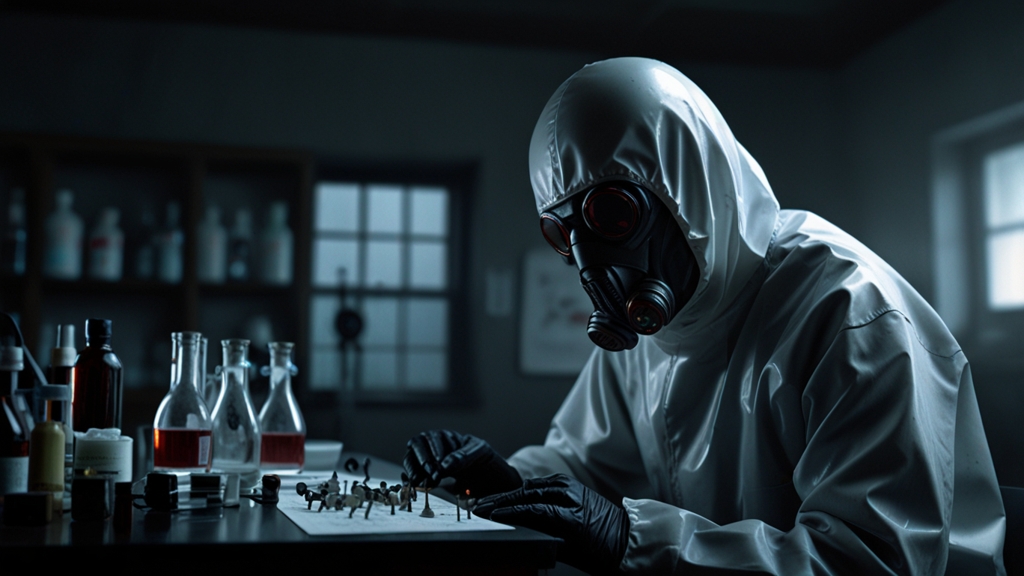The Reality of Bioweapons: The Dark Side of Biological Research
In the realm of modern science, biological research has yielded a myriad of benefits, from curing diseases to improving agricultural productivity. However, the same research that drives these positive advancements also carries a dark and perilous side: the potential creation and use of bioweapons. These weapons harness the destructive power of pathogens, turning them into tools of war and terror. Understanding the reality of bioweapons is crucial for managing the risks associated with biological research.
What are Bioweapons?
Bioweapons, or biological weapons, are pathogens like viruses, bacteria, fungi, or other toxins that are used to cause disease or death in humans, animals, or plants. Unlike conventional weapons, bioweapons have the potential to spread beyond the intended target, causing widespread epidemics or even pandemics. Their development and deployment are akin to opening Pandora's box, with unpredictable and often uncontrollable consequences.
A History of Bioweapon Use
The concept of using biological agents as weapons is not new. Historical records reveal that bioweapons have been used for centuries. One of the earliest documented instances was during the Siege of Caffa in 1346, where the attacking Mongol forces catapulted the bodies of plague victims over the city walls, inadvertently starting the Black Death pandemic in Europe.
“This ancient form of warfare underscores the enduring attraction and dangers of bioweapons, which have evolved from crude methods to sophisticated laboratory creations.”
In the 20th century, bioweapon programs were developed by numerous countries, including the United States, the Soviet Union, and Japan. During World War II, Japan's Unit 731 conducted horrific experiments using biological agents on prisoners of war and civilians. Following the war, the revelation of these atrocities and the potential for global catastrophe led to efforts to curtail the use of bioweapons.
International Regulations and Treaties
The Biological Weapons Convention (BWC), which came into effect in 1975, was a landmark treaty that sought to ban the development, production, and stockpiling of biological weapons. The BWC was a significant step towards preventing the proliferation of these dangerous agents, but it has faced numerous challenges in enforcement and verification.
“While the BWC represents a critical effort to mitigate the risks, its lack of comprehensive enforcement mechanisms allows for potential violations to go unnoticed and unpunished.”
Despite international agreements, the threat posed by bioweapons remains. Advances in biotechnology and genetic engineering have provided new tools that could theoretically be used to create more potent and targeted biological agents. This dual-use dilemma, where scientific progress can be used for both beneficial and harmful purposes, continues to be a major concern for the global community.
Current Threats and Future Risks
In the 21st century, the threat of bioweapons has become more complex. The rise of synthetic biology allows for the possibility of weaponizing novel pathogens that have no natural counterparts. Moreover, non-state actors, such as terrorist groups, could potentially gain access to biological weapons, further complicating efforts to control and prevent their use.
“The modern landscape of bioweapon threats highlights the need for robust international cooperation, transparent scientific practices, and stringent biosecurity measures.”
Efforts to improve global health security, early detection systems, and rapid response capabilities are essential in mitigating the impact of potential biological attacks. Collaboration between governments, scientists, and international organizations is critical to ensuring that the dark side of biological research does not overshadow its many benefits.
Conclusion
The reality of bioweapons underscores the dual-edged nature of biological research. While the pursuit of scientific knowledge holds the promise of tremendous advances in health and technology, it also carries inherent risks that must be carefully managed. By acknowledging and addressing the potential dangers, the global community can work towards ensuring that biological research continues to contribute positively to humanity, without succumbing to its more sinister possibilities.
It is imperative that we stay vigilant, committed to transparency, and foster a culture of responsibility in the scientific community to prevent the dark legacy of bioweapons from becoming an indelible part of our future.











